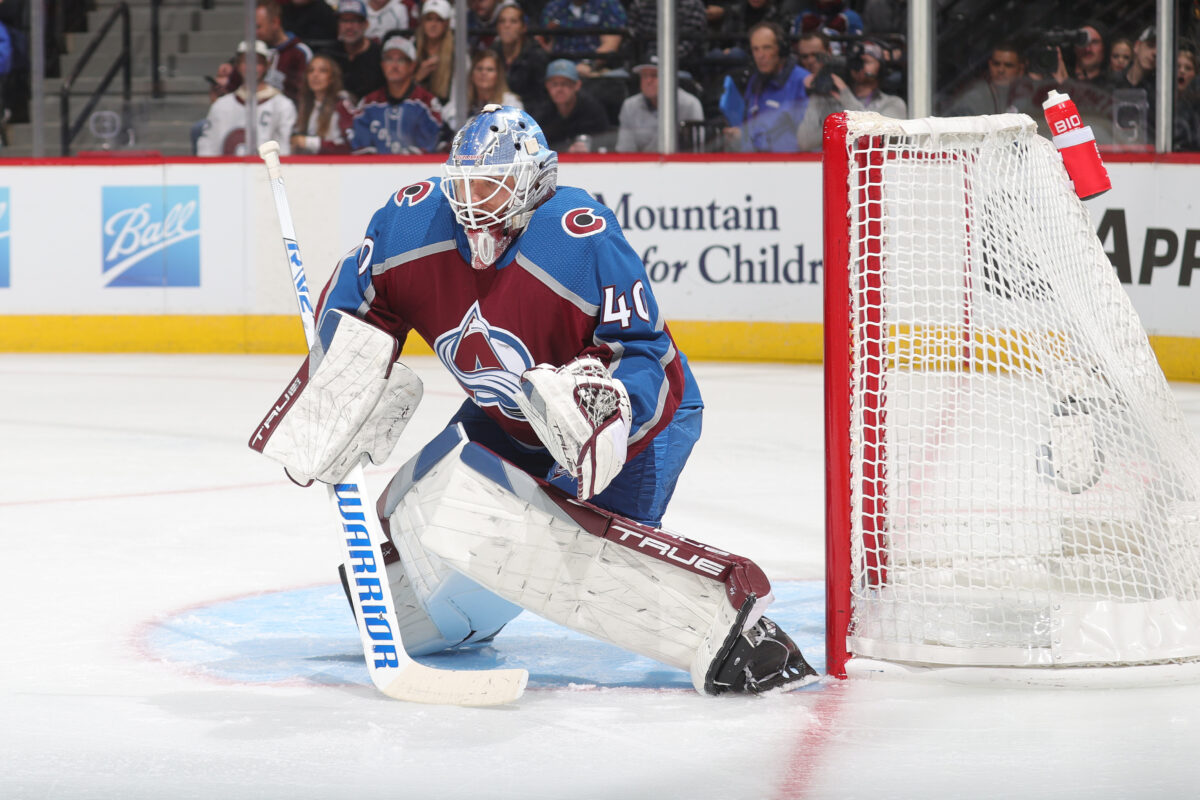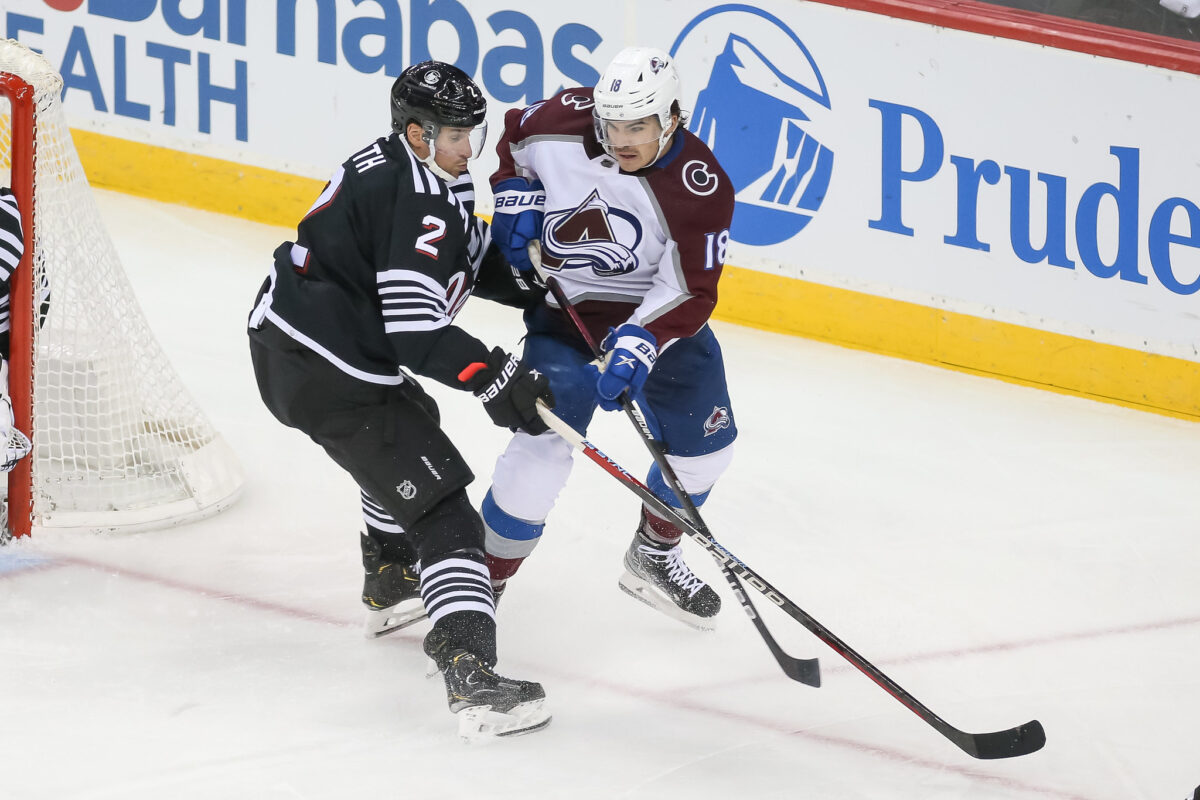After a turbulent start to the 2022-23 season in which injuries to several significant contributors beset them, the Colorado Avalanche appear to have turned a corner heading out of the All-Star Break. The reigning Stanley Cup champions own an 8-5-0 record since Jan. 1. They have won seven of their last 10 matchups by a cumulative total of 38-23 while taking advantage of a lighter schedule to start 2023.
As a result of their recent surge, the Avalanche currently occupy the Western Conference’s second wildcard spot and rank eighth in the conference by points percentage (PTS%). They’re not out of the woods yet, but their situation looks much brighter than it did just a few weeks prior.
Outside of the obvious variable of slowly regaining something resembling a full-strength roster, let’s dive into three other reasons for the Avalanche’s recent success in the second half of the season.
Francouz and Georgiev Shutting the Door
The Avalanche are currently committing $5.4 million to goaltenders on their active roster, the 23rd-highest mark in the league. Given how well Pavel Francouz and Alexandar Georgiev have fared as part of a tandem this season – particularly in January – it’s arguable that the Avalanche are receiving the greatest return on their goaltending investments in the NHL.
The pair have fairly evenly split the workload to start 2023, with Georgiev earning eight of 13 total starts. Among goaltenders to have played in at least two games since Jan. 1, Georgiev and Francouz rank ninth (.933) and 18th (.925) in save percentage (SV%) respectively.
Georgiev has singlehandedly kept the Avalanche afloat, saving 8.9 goals above expected (GSAx) across the same one-month span. That total ranks third among all goaltenders and represents the exact type of value the Avalanche hoped they were getting when they traded for the 26-year-old last summer. Francouz comes in at just under two GSAx, so the team has received stellar netminding regardless of which one occupies the crease.

On the season as a whole, Avalanche netminders have collectively posted a .914 SV%, the fifth-highest mark in the league. It’s a good thing too as Colorado hasn’t matched last season’s offensive output, averaging 3.15 goals per game this year (17th in the NHL) compared to the 3.8 goals per game (third) which powered the club to the best season in franchise history.
Given that neither goalie has played in more than 34 games in a single NHL season, whether they can maintain this level of play remains to be seen. Georgiev appears to have been anointed as the defacto starter and should finish the season with around 50 appearances. If he can handle the increased workload, the Avalanche will be an even bigger threat come playoff time.
Avalanche Stars Playing Like Stars
If saying that the Avalanche are benefitting from their superstars playing like superstars seems like it should be a given, remember that many big names have disappointed this season. With the likes of Gabriel Landeskog (48 games), Bowen Byram (38), Valeri Nichushkin (28), and Josh Manson (27) all experiencing extended absences, the team’s remaining stars have stepped up in their stead.
All three of Nathan MacKinnon, Mikko Rantanen, and Cale Makar were named to the 2023 NHL All-Star Game after doing their part to keep the Avalanche in playoff contention. When you look at both their box score and underlying numbers, it’s easy to see why.
You may also like:
- Colorado Avalanche Won’t Be Contenders This Season
- Colorado Avalanche Lineup Projection for 2024-25
- Avalanche Giving Nikolai Kovalenko a Chance to Prove Himself
- 3 Avalanche Players With the Most to Prove in 2024-25
- Peter “Foppa” Forsberg: A Biography
Rantanen’s 34 goals in 48 games are tied for third in the NHL, although he’s tied for the league lead with 27 even-strength markers. The Avalanche have been forced to trot out severely depleted lineups on occasion this season, so the Finnish winger bore the brunt of the workload up front. He leads all forwards in average ice time (22:49) and sits 37th overall.
Despite being the only player in the top 50 by points to have played fewer than 40 games, MacKinnon ranks 24th in cumulative points (54 in 37 games) and is tied for sixth with 41 assists, but his scoring rate of 1.46 points per game (P/G) ranks fourth leaguewide. He’s thrown the team on his back in tandem with Rantanen on offence, and there’s little reason his output should slow down once the Avalanche’s forward ranks are replenished.
Makar, the reigning Norris Trophy winner, hasn’t hit the heights of last season with only 45 points in 44 games, but he’s carried the league’s heaviest workload as the only player to average more than 27 minutes per game. He’s taken on more responsibility on the penalty kill and the onus for directing both the Avalanche’s offensive and defensive strategies has fallen on his shoulders.

Devon Toews – Makar’s most-frequent defensive partner – is the only other Avalanche defender to average more than 21 minutes per night in all situations. The pair have been tested by the absences of Byram and Girard, but has been one of the league’s top duos again this season. According to MoneyPuck, the Avalanche own just over 60% of the share of both expected (xGF%) and actual goals (GF%) when the pair takes the ice, the seventh- and 16th-best marks among pairs with at least 200 minutes played at 5-on-5.
Since Jan. 1, MacKinnon (20 points in 13 games), Rantanen (16 in 13), and Makar (11 in nine) all rank 23rd or higher in P/G. Their efforts combined with strong play in the crease have been enough to stem the tide and keep the Avalanche on the right side of the playoff margin. Their extreme usage could be taxing in the long run, but it’s full steam ahead for now.
Avalanche’s Depth Forwards Chipping In With Scoring
Just as the stars have shown up, a few of the Avalanche’s key depth pieces have made the most of their expanded opportunities. Since the turn of the year, Evan Rodrigues (11 points in 10 games), Samuel Girard (nine in 13), Alex Newhook (eight in 13), J.T. Comper (eight in 13), and Logan O’Connor (six in 13) have all been important secondary contributors.
When the roster is at or close to full health, those players will see their roles reduced and their production decline as a result. Still, their continued assistance is required for the Avalanche to overpower the similarly deep clubs obstructing their Cup path.

Girard and Newhook in particular have struggled to meet expectations assigned to them as a result of their contract (Girard) or draft pedigree (Newhook). Their play could be a byproduct of occupying an inappropriate role due to the number of injuries, but they’ve been frustrating even in that context.
With how they’ve fared in the absence of several key pieces, they should feel comfortable in their ability to repeat in 2023, especially if reinforcements are brought in at the upcoming trade deadline.
Avalanche Should Still Be Considered the Western Conference Favourites
Fairly or not, a team’s regular-season performance is rarely used as the defining barometer for measuring success. As the Avalanche learned all too well prior to their Stanley Cup win, sustained regular-season excellence means very little if similar exploits in the postseason do not accompany it.
With a whole host of injuries taking their toll on the lineup for most of the season to date, the early trials and tribulations will be forgotten as long as the Avalanche reach the playoffs. Once they’ve cemented their playoff position, all eyes will be trained on how the team defends its championship claim.
Their current record isn’t indicative of the Avalanche’s true talent level, something that will be left obscured until the lineup approaches or achieves full health. This recent run of form without the services of several significant contributors should strike fear into the rest of the Western Conference.
Look out everyone, the reigning champions are about to hit top gear.
Data courtesy of Evolving Hockey, Hockey Reference, Natural Stat Trick, and the NHL.
